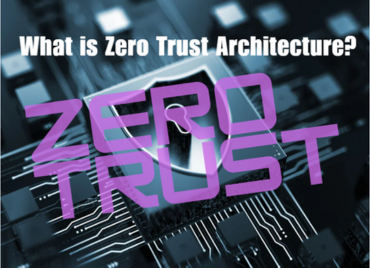What is Zero Trust Architecture?

The term "zero trust" has become increasingly popular in the cybersecurity industry in recent years. In fact, the Department of Defense released its Zero Trust Strategy and Roadmap. But, what does it actually mean?
Simply put, a zero trust security model assumes that every user, device, and network connection is potentially untrusted and therefore must be validated before access is granted. This approach contrasts the traditional "perimeter defense" model, which assumes that everything inside the perimeter is trusted and only external threats must be guarded against.
Let’s dive deeper into what the zero trust approach to cybersecurity can look like.
Why Is The Zero Trust Approach Gaining Popularity?
The zero trust approach is gaining popularity because it addresses many challenges organizations face with traditional cybersecurity models. One such challenge is the growing number of cyber threats, which are becoming more sophisticated and difficult to detect. The zero trust approach focuses on continuously verifying a user's identity and monitoring for suspicious activity, making it more effective at detecting and responding to threats.
Another challenge is the increasing use of cloud-based services, making it difficult to maintain a secure perimeter around an organization's assets. The zero trust approach is well-suited to cloud environments, focusing on securing individual assets and networks rather than creating a single, secure perimeter.
Why Should an Organization Adopt Zero Trust?
There are several reasons why an organization should consider adopting a zero trust security model:
- Better protection against insider threats: As mentioned above, a zero trust model assumes that all users and devices are potentially untrusted, so it is more effective at detecting and preventing attacks from within the network.
- Enhanced security for remote work: With the increasing number of remote workers, ensuring that all access to company resources is secure, regardless of location is important. A zero trust model can help to accomplish this.
- Improved efficiency: A zero trust model can reduce the time and effort needed to manage security and access controls by only granting access to the specific resources that a user needs.
- Increased visibility: With a zero trust model, all access to resources is logged and can be monitored, providing greater visibility into potential security threats.
Finally, the zero trust approach can help organizations meet regulatory compliance requirements and reduce their overall risk. By implementing the key principles of zero trust, such as continuous monitoring and microsegmentation, organizations can demonstrate that they are taking a proactive approach to cybersecurity and protecting their assets and data.
Discuss Zero Trust with SSE
A zero trust approach to cybersecurity is a proactive and effective way to protect against threats, improve compliance, and enhance security for remote work. If your organization is considering adopting this approach, it is important to work with a trusted security provider to address your organization’s specific needs.
At SSE, we offer various services, including security assessments and training. Our team of experienced security professionals helps organizations with our vetted IT and cybersecurity tools as managed services to ensure their systems and networks are secure.
If you are interested in learning more about SSE's cybersecurity services, please get in touch with us today for a complimentary initial network assessment!
Additional Blog Posts

CMMC Deadlines: Defense Contractors Face High-Stakes Compliance Timelines
As the U.S. Department of Defense accelerates enforcement of the Cybersecurity Maturity Model Certification (CMMC), thousands of Defense Industrial Base…
DOJ Ramps Up Cyber-Enforcement on Defense Contractors
The Department of Justice’s recent $4.6 million settlement with defense contractor MORSECORP sends a clear message to the Defense Industrial…
